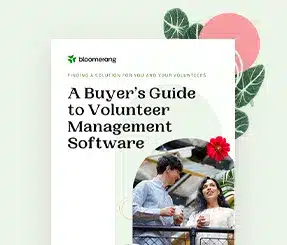Why You Should Do A Cost-Benefit Analysis Before Throwing Your Next Nonprofit Fundraising Event


Full Platform Overview Chat With Us



Full Platform Overview Chat With Us




I confess to having a love/hate relationship with fundraising events. I love them as a major donor cultivation tool, but I hate them for everything else! At its best, a nonprofit fundraising event is fun. These events divert attention from one-to-one fundraising efforts, which can be intimidating. After all, it’s easier to sell tickets than ask for a gift.
But there are also potential pitfalls when it comes to hosting a nonprofit fundraising event. Here are a few negatives (transactional):
Here are the positives (potentially transformational):
Let’s look at the cost to raise a dollar for a range of fundraising strategies.
James Greenfield is the guru of fundraising cost-benefit analysis. The Association of Fundraising Professionals (AFP) arrived at similar results. In the best of all possible worlds, it cost 50 cents to raise a dollar from an event. The only more expensive strategy is direct mail donor acquisition. I would argue events are just as costly if you take into account the reality of what’s involved.
Let’s look at what’s involved in putting on an event.
Let’s look at what it takes to meet folks where they are and move them to a greater level of engagement. Let’s assume the point of the event is moving people along the continuum. Too often organizations forget about trying to turn event attendees into ongoing donors. Since the value of a donor to you is based on lifetime value, it’s essential at the outset you incorporate strategies into your event plan to move your guests along the pipeline—before, during, and after the event.
Note: It’s important to remember buying a ticket is not the same as making a donation. Often a large portion of the ticket price is the fair market value of what guests get in return; only some of the ticket price is tax-deductible.
A donor makes a $300 gift. What do you have? You get $300 to spend on your mission, and you can list them as a $300 donor in your donor honor roll.
You sell a donor a $300 ticket. What do you have? If the fair market value of the event is $200, you only have $100 to spend on your mission. It’s likely you’ll have even less than that—if anything at all—once all your indirect costs are taken into account. The donor, however, considers themselves a $300 donor. They may even be ticked off if you don’t treat them that way.
You coax last year’s $3,000 donor to buy a table for this year’s event. As with the example above, instead of having $3,000 to spend on your mission, you have just $1,000—if even that.
Imagine last year’s $3,000 donor attended your event the previous year and you had a specific cultivation plan for them. In other words, the event wasn’t a one-off transaction but one step in a larger strategy to generate a transformative gift from this (and other) major donors.
At the event, you made sure a board or staff member met them, greeted them, and gave them special treatment. You took special care with their seating arrangement so they were with people you thought they’d enjoy. Maybe a staff or board member was placed near them to engage in a “getting to know you better” dialogue that could be followed up on after the event. You later reach out multiple times with a variety of “touches” and “moves” designed to draw the donor closer.
Now you’re ready for an ask that engages their deepening passions. You ask for $5,000 to buy a table. Better still, you ask for $5,000 to be an event sponsor with two tickets. This leaves you with $4,600 to spend on your mission—plus an opportunity to further inspire them so next year you can ask for a $10,000 gift!
Spending more to raise substantially more makes sense. Events can be a powerful major donor cultivation strategy. And, in this case, it’s actually worth the investment.
It’s up to you to honestly assess your target for an event. When it comes to individual giving, an acceptable cost-benefit ratio can depend on a range of factors:
“Would the CEO of the not-for-profit prefer his fundraising office to generate $3 million and spending $600,000 for a $0.20 per $1.00 raised ratio, or would he/she prefer it generate $4 million at the cost of $1 million, for a $0.25 per $1.00 raised ratio? The ratio of 4 to 1 does not look as good as 5 to 1. But on the other hand, the net income at 4 to 1 is $3 million; while at a cost ratio of 5 to 1 net income is $2.4 million. Most not-for-profit CEOs, while still asking if we could do better, will forget the ratio if it means having $3 million to spend on a mission versus $2.4 million.”
— Michael Gerrity, Return on Investment in Fundraising: Using ROI to Your Advantage
What if you could generate $10 million at a cost of $5 million? That’s 50 cents on the dollar instead of 25 or 20 cents, but it means having $5 million to spend on your mission. You need to know you have a reasonable chance of reaching your net revenue goals—and this will be based on the particulars of your own history and the factors outlined above.
Be thoughtful and honest about what you’ll get out of your nonprofit fundraising event and what you’ll give up to throw it. Weigh the positives and negatives. Don’t do it just because it’s always been done or because your boss or a board member wants you to do it.
If you can’t get out of the event entirely, consider ways to make it a more reasonable expenditure of resources. Last year was an unexpected blessing for many organizations that found they could do something much less labor intensive and costly by throwing a virtual event. If that’s you, consider sticking with this.
Here are other things to consider:
I’m an advocate for retiring old notions of “overhead”. If what you end up with nets out to more money to further your mission and doesn’t suck up so much staff and volunteer time that there’s nothing left to apply to other potentially fruitful fundraising strategies, go for it. If what you end up with simply sucks up precious limited resources that could be more profitably employed elsewhere, think about doing something else.

Comments
Common Sense Nonprofit Event Planning Advice - Clairification
A.J. Steinberg